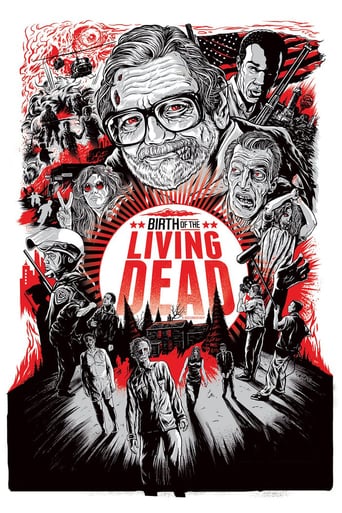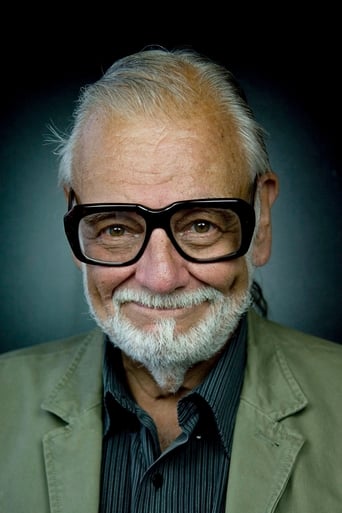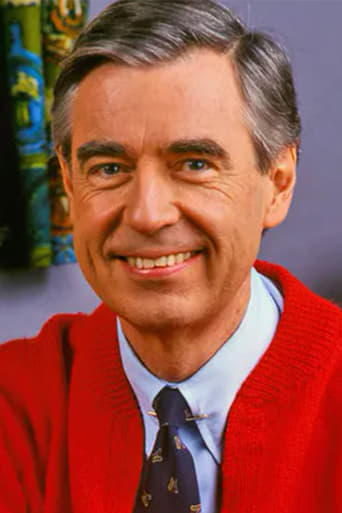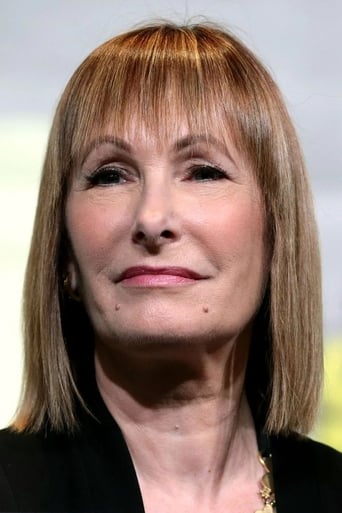
A behind the scenes look into George Romero's groundbreaking horror classic Night of the Living Dead.
Reviews
The performances transcend the film's tropes, grounding it in characters that feel more complete than this subgenre often produces.
The film makes a home in your brain and the only cure is to see it again.
It is an exhilarating, distressing, funny and profound film, with one of the more memorable film scores in years,
It’s sentimental, ridiculously long and only occasionally funny
Very, very few films can truly claim to have wholly created a new sub-genre. George A. Romero's Night of the Living Dead (1968) is such a rare beast. It is truly the year zero moment for the zombie film as we understand it today. Sure, there had been sporadic examples of zombie films before Night but they all focused on a decidedly different type of thing. The early zombie, both in cinema and literature, was a sort of sleepwalking being in a deathly trance. Romero's film was the first example anywhere to postulate the idea that bodies returning from the dead would be rotting corpses who relentlessly pursue human beings in order to rip them apart and eat them. Nowadays, of course, zombies are simply everywhere. In the last decade in particular the idea of the Romero zombie has become so well known that it is a cultural reference that practically everyone understands. For this reason, it goes without saying that Night of the Living Dead is easily one of the most influential and important horror movies ever made. And that's only part of the reason why.Birth of the Living Dead is a very good focus on the making and impact of this seminal film. It looks at the social climate of the time and considers how this influenced the making of the movie. The late 60's were one of the most dramatic periods in American history. The counter-culture was in full swing but about to come crashing down, political distrust was widespread, racial tensions were resulting in violence and the deeply divisive Vietnam War rumbled on ominously in the background. All of these elements and more led to the crumbling of the Hollywood studio system whose movies no longer connected with the rapidly changing times, this of course led to the brief but glorious New Hollywood years where many personal and left-field films were made by the big studios.While all this was going on a bunch of inexperienced film-makers from Pittsburgh were putting together a low budget horror movie, so low budget that it was being shot in black and white. This very fact was a serious obstacle back then given that the move to colour was pretty widespread by 1968. But this independent film went against the grain in other ways too. For one thing it had a black lead actor. Not only that, but the film never even made any reference to this and dealt with it in a matter of fact manner, making the decision seem all the more bold. This may not sound like much now but in the 60's it was still quite a hurdle and ultimately transgressive. Also, the film brought in a unique seriousness to its b-movie material. Everything is played completely straight. The influence of the European New Wave can be detected in the television scenes of the news reports detailing the carnage. They are messy and naturalistic in a manner like an actual news-feed; this of course added to the urgency and realism and magnified the fear factor. With this more serious framework, Romero introduced graphic violence which added to the overall terror. Gory violence had been a staple of some schlock horror of the earlier 60's in the form of the films of H.G. Lewis and his imitators but these films always essentially had their tongues in their cheek. Romero removed the humour safety valve and so the visceral violence is all the more terrifying as a result. We have zombies eating human remains and a little girl bloodily murdering her mother in full on sequences. The film even had the nerve to end on an incredibly bleak and ironic note with the hero Ben being killed at the end when a gung-ho mob shoot him thinking him a zombie. But this hero also had survived by doing the one thing he advocated against the whole film, so this was a film that presented the viewer with many questions and gave few easy solutions.The documentary interviews many of those involved in the making of the film. We get to understand the financing problems and the way that everybody involved had a variety of roles in the creation process in order to save money. We also learn how difficult it was to sell the movie afterwards, even exploitation distributors AIP only wanted to release it if it had a happy ending added. When it did eventually get a distribution deal it met with initial hostility and only later did many actually understand it. It was ahead of its time in truth. It also is notable for falling immediately into the public domain for not having a © mark on it, leading to the film-makers who made this incredibly influential work not making a cent on it! This film details all this and much more, it's essential viewing for anyone at all interested in this most important of horror movies.
Like it or not, George A. Romero truly is the father of today's horror cinema. The original "Dead" trilogy – NIGHT, DAWN, and DAY – accomplish that simple truth in unveiling a very human metaphor wrapped in the grisly package of blood-letting entertainment. And why not celebrate the man and his accomplishments? Perhaps dig deep into the motives and industry tales of movie-making. Perhaps that is what Rob Kuhns set out to do with his BIRTH OF THE LIVING DEAD documentary. Unfortunately, the data unearthed in BIRTH OF THE LIVING DEAD could have been a solid DVD featurette. Instead, an additional 40 minutes of repetitiveness was added, dragging the film down as a lumbering, undead walker.To its credit, BIRTH sets the stage of 1968 America, when NIGHT OF THE LIVING DEAD was released, quite well providing key insights to the civil rights movement as well as to the fact that NIGHT stars an African American. Likewise, the documentary gets right into how – and why – the film was made and some of the issues and trickery Romero and his crew employed during production and editing; Romero himself is presented as both jolly and candid.Then the film rinses and repeats. And repeats. And, oh, did you forget that NIGHT starred an African American? Well hold on tight, you'll be reminded in just a few short minutes as horror film director Larry Fessenden will tell you how great the original film is and repeat the lines verbatim for the camera. Granted, the docu's subject is NIGHT OF THE LIVING DEAD, but that topic alone screams out for accompaniment. There was absolutely no mention of the 1990 remake, nor the 2004 remake of DAWN. And obviously the most apparent of Romero's offspring – THE WALKING DEAD – is only shown as a background image. Kuhns showed the historical relevance of NIGHT, but only provided the merest taste of its social impact, a taste that was sorely missed.
While I am certainly no fan to zombie films in general because the genre has been WAY over-saturated in recent years, I have enjoyed a few of the films and understand that they still are very popular and important films despite my misgivings about many of the recent films. So, because of this, the new documentary Birth of the Living Dead is well worth seeing and is rather timely. It is THE granddaddy of all modern zombie films—the one that led to subsequent generations of such pictures. In fact, it's one of the most important movies of the 1960s and it's one every film student and horror fan should see and appreciate. It managed to overcome its low production values and humble origins to become a cult favorite.Not surprisingly, the creator of the original film, Night of the Living Dead, George Romero, is featured in this documentary. When he's being interviewed is when the film is at its best. His tidbits about the making of Night of the Living Dead are really interesting and I wanted even more of this than Romero provided. Additionally, a variety of experts are interviewed and they discuss what they love about the movie. Also not surprisingly, various clips from this seminal film are shown throughout this homage. Among the topics covered are the director's expectations as well as how he made the film, the impact of the film on pop culture, the reaction of the critics (both immediately after the film was released and later after many re-assessed the movie), the political and racial themes in the film (whether intended or not) and how the film was groundbreaking as well as how it mirrored the times in which it was made.This documentary certainly is well worth seeing and I recommend you see it provided you first see the old film it's based on—otherwise it might be a bit confusing. However, it's not a perfect making of film and could have been a bit better. As I mentioned above, the inside information from Romero was great but too often various 'experts' (and I have no idea what constituted this in many of the folks chosen to discuss the film) talked a lot more about hidden social significance (something that Romero revealed is NOT always in the movie) and the times instead of talking more about the original movie itself and how it was made. Still, despite this, the film is reasonably well made and kept my interest throughout. For horror fans and film students, it certainly should be a film to watch.
BIRTH OF THE LIVING DEAD (2013) ***1/2 Documentarian Rob Kuhns' valentine to George A. Romero's seminal zombie horror film 'Night of the Living Dead' gets the richly deserved revered treatment by dissecting the cult classic 45 years after its unleashing to an unsuspecting populace and influencing cinephiles for future generations and filmmakers everywhere. Interviewing fellow pundits like executive producer (and fellow filmmaker) Larry Fessenden, critics Mark Harris and Elvis Mitchell, producer Gale Anne Hurd (who admits echoes of NOTLD in her post-zombie-apocalypse sensation THE WALKING DEAD), and Romero himself who recollects the shoe-string budget, lack of initial general interest upon the film's release and the tidbits of giddy fanboy insider info on how he got the chiller made. Kuhns wisely incorporates film footage of the 1960s political ongoings and social strata that the film more-or-less unintentionally evoked as themes/messages to show just how timely/less it truly was. Fun and insightful and perfect for those die-hard fans of the undead.
Top Streaming Movies


















